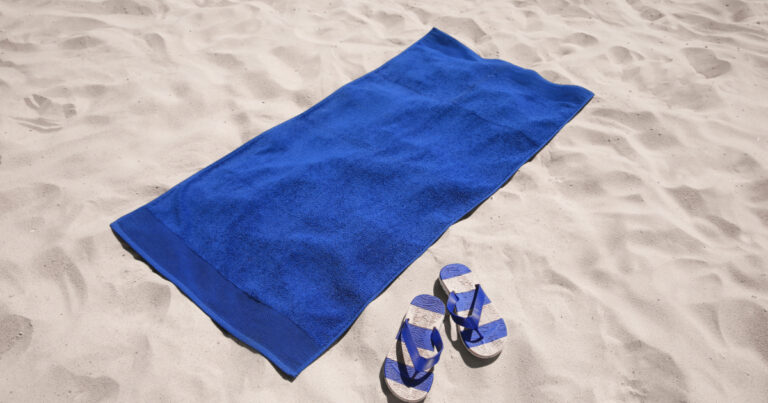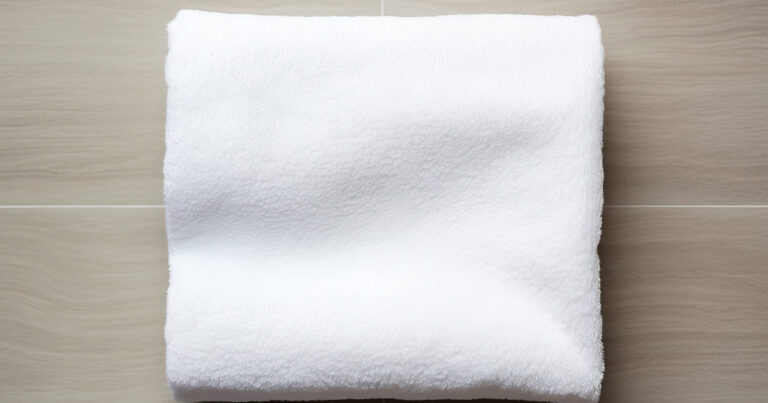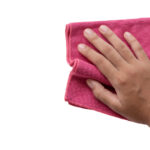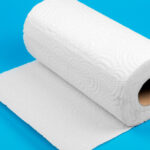Heading to the beach or pool this summer? Don’t forget to pack a beach towel! But with so many options on the market, it can be tricky to decide which type of beach towel is right for you. One of the biggest considerations is whether to choose a traditional cotton towel or a more modern microfiber beach towel.
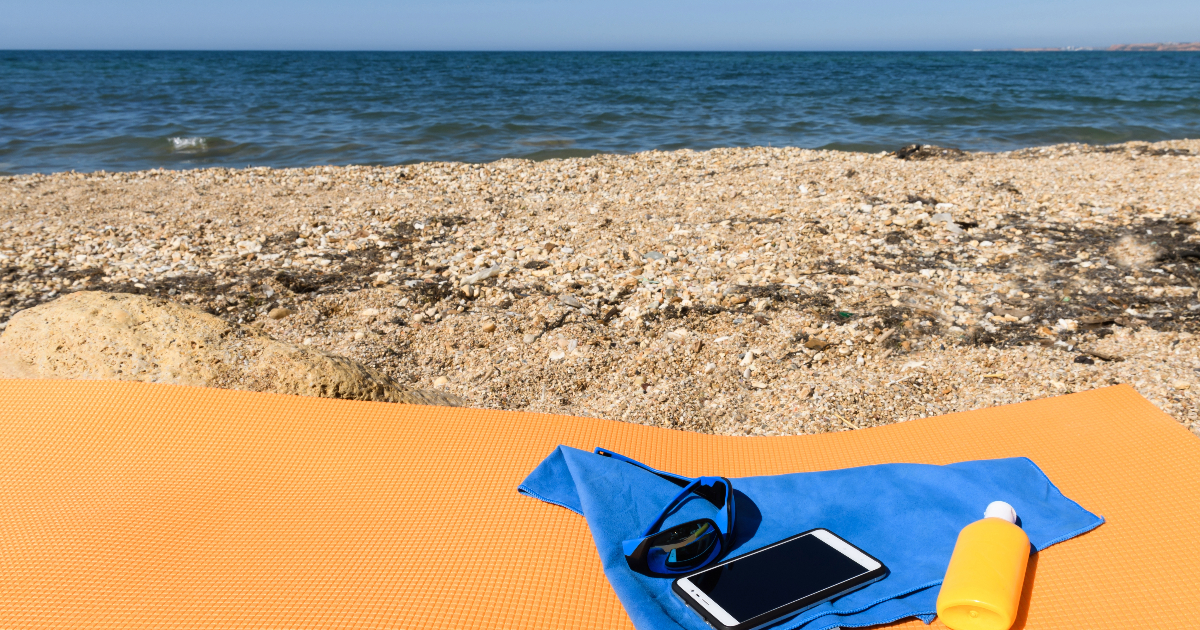
Microfiber towels have risen in popularity in recent years and are now a favorite for many beachgoers. But are they truly better than regular cotton beach towels? Or are there some downsides to using synthetic microfiber at the beach?
What Are Microfiber Beach Towels?
Microfiber towels are made from extremely fine synthetic fibers that are woven together to create a lightweight and quick-drying towel material. The microfiber is typically constructed using polyester or a polyester-nylon blend.
The fibers in microfiber towels are much finer than cotton fibers. In fact, microfiber strands are approximately 1/100th the diameter of a human hair! This means the strands can be woven together very tightly, creating millions more strands per square inch than typical cotton towels.
It’s this ultra-fine fiber size that gives microfiber towels some of their advantages like enhanced absorbing potential and quickness to dry. Many microfiber beach towels are produced using a waffle weave or small terry cloth loops to add absorbency and a more cotton-like texture.
Benefits of Choosing Microfiber Beach Towels
So why have microfiber beach towels become so popular? Here are some of the main benefits that explain their appeal:
Lightweight and Compact
One of the best perks of microfiber is that it’s incredibly lightweight, even in generously sized beach towels. This makes microfiber towels much easier to transport in your beach bag or luggage if you’re traveling. When packed, they take up very little space.
The lightweight feel also makes microfiber less cumbersome and heavy when wet. No more lugging around sopping wet, dripping cotton towels at the end of the day!
Quick-Drying
Perhaps the number one advantage to microfiber is how quickly it dries compared to standard cotton towels. The ultra-fine fibers have greater surface area exposure to air, allowing moisture to evaporate rapidly.
Most microfiber beach towels will dry in just 20 or 30 minutes on a hot day. For those who like to take frequent dips while beachgoing, not having to lay on or wrap up in a perpetually damp towel is a nice perk. Quick drying also makes microfiber ideal for various water sports.
Sand-Resistance
Thanks to tightly woven synthetic fibers, sand has a harder time embedding into microfiber towels. A simple shake can release most of the sand so it doesn’t get dragged into your bag and car later.
This sand-resistant quality also means microfiber towels stay cleaner and don’t retain debris. So you can use them for beach activities like laying on the sand without having to wash them after every single use.
Affordability
Cotton is a more expensive material to produce, especially high-quality extra long staple cotton that is soft and durable. The synthetic microfiber production process is more streamlined and cost-effective in comparison.
This means microfiber beach towels can often be purchased for lower prices than comparable sized cotton towels, sometimes even less than $20 for a generously sized beach towel. The affordability makes microfiber a budget-friendly choice.
Variety of Styles and Colors
With streamlined digital printing technology, microfiber beach towels now come in a huge range of colors, patterns, and designs. Whether you want a solid color, pretty floral print, or pop culture character towel, there are endless options to choose from.
The synthetic fabric also allows for more colorfastness than natural cotton. So the colors and patterns will stay vibrant wash after wash without fading.
Downsides of Microfiber Beach Towels
Microfiber isn’t flawless though. Here are a few of the downsides to consider if you’re debating between microfiber and cotton beach towels:
Less Absorbent Than Cotton
While the tight weave does allow microfiber towels to absorb moisture well, cotton still reigns supreme in terms of absorbency. The natural fibers have more space to soak up and retain water in.
So for drying off after a dip in the ocean, a cotton towel may do a better job of getting you drier faster by absorbing more water instead of just wicking it away.
Can Retain Odors
The synthetic microfiber material is prone to getting a bit stinky and retaining odors more so than cotton. Bacteria cling to the fibers more easily. Make sure to wash microfiber towels thoroughly and frequently to combat odor issues.
Not as Comfortable for Lounging
If you plan to spend more time sunbathing and lounging on your beach towel, cotton is likely the comfier choice. The fluffier texture and absorbency keep you cooler on hot sandy beaches. Microfiber’s thinner, wicking properties don’t provide the same level of comfort.
Environmentally Problematic Fibers
The synthetic polyester and nylon used to make microfiber shed tiny plastic microfibers into waterways when washed. These fibers contribute to ocean pollution. So for the eco-conscious, cotton is a more sustainable choice.
Can Feel Clingy When Wet
Unlike cotton’s soft, soothing feel on your skin when wet, some people find microfiber towels uncomfortably clingy and sticky when they get wet. The synthetic material tends to cling rather than glide over wet skin.
Microfiber vs. Cotton Beach Towels Compared
To recap the key differences, here’s a side-by-side comparison of microfiber and cotton beach towel properties:
| Microfiber | Cotton |
|---|---|
| Very lightweight and compact | Heavier, especially when wet |
| Dries extremely quickly | Dries reasonably fast |
| Sand resistant | Sand sticks more easily |
| Affordable pricing | More expensive, especially long-staple cotton |
| Endless color and pattern choices | Usually solid colors |
| Less absorbent | Very absorbent |
| Can retain odors | Natural odor resistance |
| Not as comfortable for lounging | Soft, fluffy texture |
| Synthetic fibers concerning for environment | Biodegradable natural fibers |
| Can feel sticky when wet | Soft, soothing feel when wet |
Key Takeaway: Choose microfiber beach towels if quick-drying performance and packability are top priorities. Pick cotton for maximum absorbency, softness, and eco-friendliness.
What Kind of Beach Towel is Best For You?
Choosing between microfiber and cotton depends on your specific needs and preferences:
- If you’re traveling or backpacking and want a towel that takes up little luggage space, quick-drying microfiber is ideal.
- For beach camping or times when you won’t be able to wash your towel frequently, microfiber resists odors longer.
- Those who like swimming and playing in the waves will appreciate microfiber’s quick dry performance.
- Microfiber’s sand resistance helps contain mess at the beach for a cleaner experience.
- Cotton is the winner for softness and absorbency when lounging and sunbathing is the priority.
- Cotton’s natural fibers make it the more eco-friendly choice.
- Kids and those with sensitive skin benefit from cotton’s softness and breathability.
Take your planned beach activities, priorities, and budget into account when deciding on microfiber versus cotton beach towels. And rest assured both fabric choices can make excellent towels in the right circumstances.
If your main goal is convenience, compact portability, and rapid drying, microfiber beach towels will serve you well. But don’t expect the absorbency and cozy comfort of traditional cotton. Find the balance that meets your daily beach needs.
What Makes the Best Microfiber Beach Towels?
Once you’ve decided that microfiber beach towels fit your lifestyle, how do you pick the best ones? Here are the key features that improve microfiber performance:
- Look for a waffle weave or terry cloth-style textured fabric. This adds absorbency and a more cotton-like feel.
- Choose a medium thickness. Too thin lacks functionality, but too thick defeats the compact nature of microfiber.
- Oversized dimensions like 40″ x 70″ provide ample room for lounging and sun coverage.
- A loop or snap makes it easy to hang up to dry.
- A convenient carrying case keeps sandy towels contained.
- Vibrant dyes indicate colorfastness that will last through washes.
- Backed by a warranty for longevity and quality assurance.
- Eco-friendly manufacturing makes microfiber production more sustainable.
Prioritize your needs like size, design, and functionality when selecting the ideal microfiber beach towel. High-quality materials and construction will also increase longevity.
Caring For Microfiber Beach Towels
To keep your microfiber beach towels performing well season after season, follow these care tips:
- Wash frequently to prevent odors, especially after beach and pool use. Use hot water washes.
- Avoid fabric softener as it can make microfiber less absorbent over time.
- Air dry rather than machine drying to preserve the fibers.
- Shake out sand after each use and rinse to prevent abrasion damage.
- Spot clean stains quickly using a towel cleaner safe for synthetics.
- Avoid bleach since it can harm the microfiber fibers.
- Store when completely dry to prevent mildew growth.
Proper washing and drying are most critical to maximize your microfiber beach towel lifespan and functionality.
Are Microfiber Beach Towels Better Than Cotton?
There’s no definitive answer since microfiber and cotton both have advantages and disadvantages that make them ideal in different scenarios.
Microfiber excels when quick-drying performance is key and compact portability is beneficial. It works well for certain active beach days and travelers.
But for softness, absorption, comfort, and eco-friendliness, cotton still beats out microfiber’s synthetic make-up. Cotton suits lounging beachgoers best.
Ideally, owning both a microfiber and cotton beach towel provides versatility. Use microfiber for the beach vacation where luggage space is limited. Break out the indulgent cotton for beach days spent relaxing at home. Let your needs and preferences guide you to the best beach towel material for the circumstance.
Key Takeaway: Consider keeping one microfiber and one cotton beach towel on hand to enjoy the benefits of both materials in different scenarios.
A Microfiber and Cotton Beach Towel Hybrid
Recently some companies have created beach towel options that blend cotton and microfiber together. These hybrid beach towels aim to provide the quick-drying performance of microfiber along with cotton’s softness and absorbency.
One side features ultra-absorbent cotton while the other has microfiber for rapid drying and shaking sand off. The combo design allows you to take advantage of both fabric’s perks in one towel.
The blend also creates a beach towel that packs down small like microfiber but has the cozy feel of cotton. While dual-sided, the overall thickness and weight is still less than traditional all-cotton towels.
These hybrids can give you the best of both worlds if you love microfiber’s functionality but also want cotton’s comfort. The mix of fibers costs a bit more than a single-material towel but carries excellent versatility.
FAQs
Which absorbs water better, microfiber or cotton?
Cotton absorbs and retains more water than microfiber. If drying ability is a priority, 100% cotton terry or velour is best. The natural fibers effectively soak up moisture.
Is microfiber or cotton better for the beach?
Microfiber performs well if you want a towel that’s sand-resistant and quick-drying. But cotton provides more softness and absorption for lounging comfort on hot sand.
Do microfiber beach towels get sand out easily?
Yes, one of the signature benefits of microfiber is sand just seems to fall off the towel without sticking or embedding within the tight weave.
Why does microfiber smell bad?
Microfiber’s synthetic makeup lets odor-causing bacteria grow more easily. Make sure to wash microfiber beach towels frequently and let air dry to prevent stink.
Does microfiber scratch your skin?
It shouldn’t, but some people find microfiber rough or clingy compared to cotton. Choose a textured microfiber style for softness similar to cotton terry.
Is microfiber environmentally friendly?
No, microfiber sheds tiny plastic fibers into waterways when washed. Cotton is more eco-friendly as its natural fibers fully biodegrade.
Can you bleach microfiber towels?
Avoid using bleach when washing microfiber as it can damage the synthetic fibers. Opt for color-safe oxygen bleaches if needed.
Conclusion
Choosing the best beach towel material comes down to considering your needs and typical beach activities before deciding on microfiber or cotton. You may even find keeping one of each on hand is the perfect solution if your beach days vary.
If quick-drying performance is essential or you favor portability, lightweight microfiber beach towels get the nod.
For unmatched comfort and a natural feel that’s sustainable for the planet, traditional cotton beach towels still have a place.


